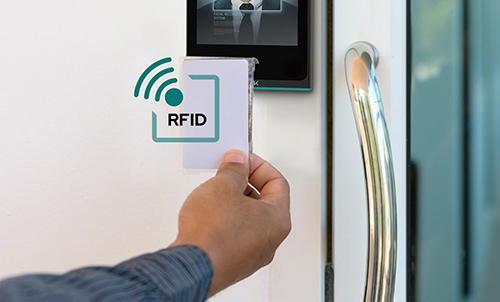In today's dynamic workplace environments, accurately tracking employee attendance is crucial for effective workforce management. Active RFID (Radio Frequency Identification) employee attendance systems have emerged as a powerful solution, revolutionizing the way organizations monitor and manage attendance. This article delves into the inner workings of active RFID employee attendance systems, shedding light on their functionality and benefits.
1. Active RFID Tags:
Active RFID employee attendance systems rely on active RFID tags assigned to employees. These tags are equipped with a microchip and an internal power source, typically a battery. Unlike passive RFID tags that rely on reader-provided energy, active tags actively emit a signal at regular intervals, enabling continuous tracking.
2. RFID Readers:
The workplace is equipped with RFID readers strategically placed at entrances, exits, or other desired locations. These readers serve as gateways for capturing the signals emitted by the active RFID tags.
3. Signal Transmission:
Active RFID tags continuously emit a unique identification signal at predetermined intervals. This signal carries the tag's unique identifier and other relevant information, ensuring precise identification of each employee.
4. Reader Detection:
As employees move within the vicinity of an RFID reader, the reader detects and captures the signals emitted by the active RFID tags. This detection occurs when employees enter or exit the premises, or pass through designated checkpoints.

5. Data Capture:
The RFID reader captures the identification signals from the active RFID tags. It then transmits this data to a centralized attendance management system or database for further processing.
6. Attendance Recording:
The attendance management system receives the captured identification data and matches it with the corresponding employee record. Based on the captured signals, the system accurately records the employee's entry, exit, or movement information, depending on the location of the reader.
7. Real-time Monitoring:
Active RFID employee attendance systems provide real-time monitoring capabilities. As attendance data is captured and processed instantaneously, HR personnel and authorized stakeholders have immediate access to up-to-date attendance information. This facilitates effective workforce management and enables prompt action when addressing attendance-related issues.
8. Reporting and Analytics:
Active RFID attendance systems offer comprehensive reporting and analytical functionalities. HR professionals can generate detailed reports and gain valuable insights into attendance patterns, trends, and performance metrics. These insights allow for data-driven decision-making, facilitating resource allocation, and identifying areas for improvement.
9. Integration with Other Systems:
Active RFID attendance systems can seamlessly integrate with other HR systems, such as payroll and access control systems. This integration streamlines attendance tracking processes, automates payroll calculations, and enhances security by managing employee access to restricted areas based on attendance data.
10. Scalability and Customizability:
Active RFID employee attendance systems are highly scalable and customizable. They can adapt to organizations of varying sizes and accommodate changing infrastructure needs. Additional readers and tags can be easily incorporated into the system to accommodate expanding workplaces or evolving attendance tracking requirements.
Active RFID employee attendance systems have revolutionized attendance tracking and management in the modern workplace. By leveraging active RFID tags, RFID readers, and a centralized attendance management system, organizations can achieve accurate, real-time tracking of employee attendance. The seamless integration with other HR systems and the ability to generate comprehensive reports and analytics make active RFID attendance systems a powerful tool for effective workforce management. Embracing this technology enables organizations to optimize attendance processes, enhance operational efficiency, and make informed decisions based on actionable attendance data.